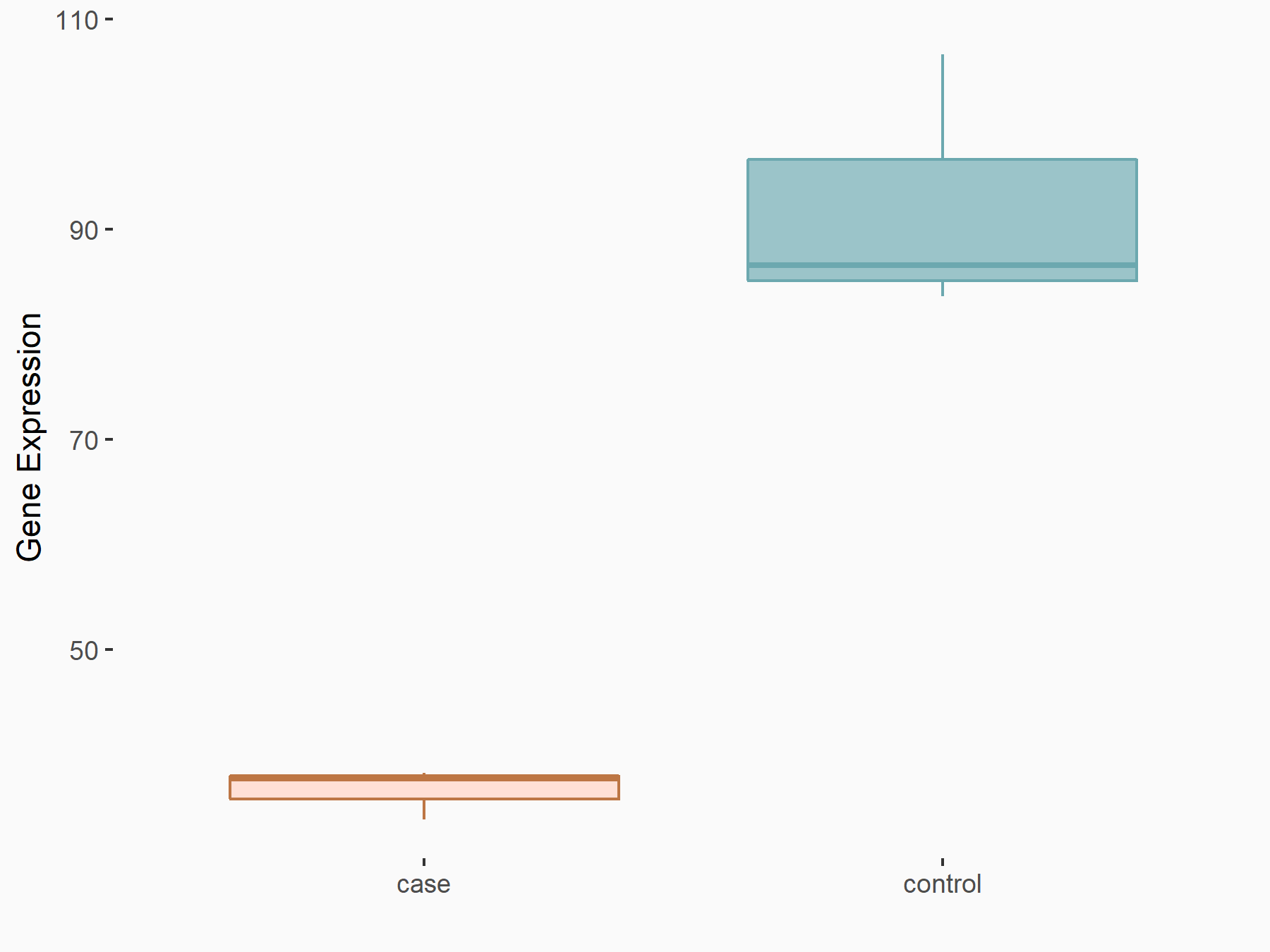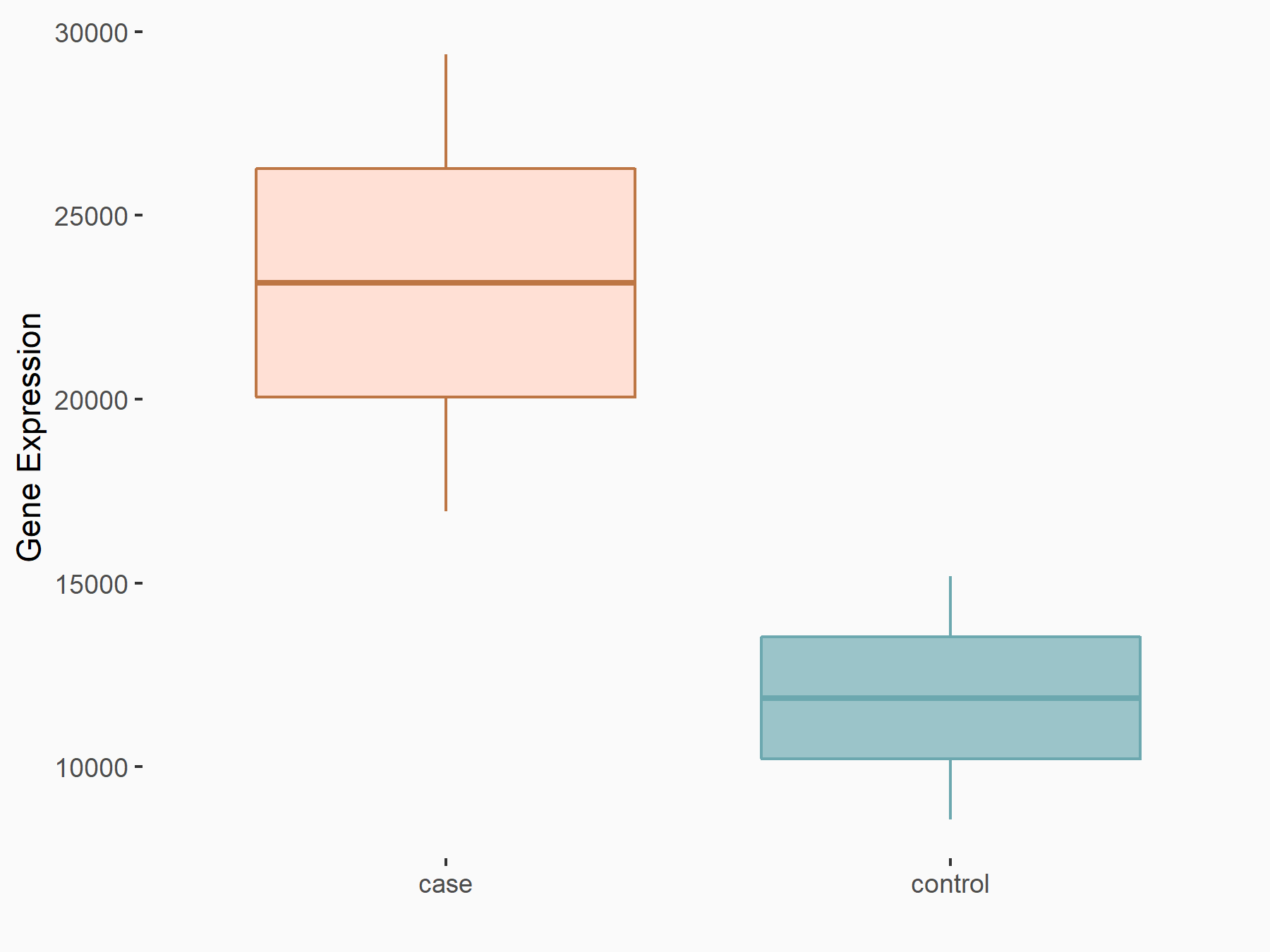m6A Target Gene Information
General Information of the m6A Target Gene (ID: M6ATAR00443)
Full List of m6A Methylation Regulator of This Target Gene and Corresponding Disease/Drug Response(s)
AXL
can be regulated by the following regulator(s), and cause disease/drug response(s). You can browse detail information of regulator(s) or disease/drug response(s).
Browse Regulator
Browse Disease
Methyltransferase-like 3 (METTL3) [WRITER]
| Representative RNA-seq result indicating the expression of this target gene regulated by METTL3 | ||
| Cell Line | Caco-2 cell line | Homo sapiens |
|
Treatment: shMETTL3 Caco-2 cells
Control: shNTC Caco-2 cells
|
GSE167075 | |
| Regulation |
  |
logFC: -1.33E+00 p-value: 3.11E-06 |
| More Results | Click to View More RNA-seq Results | |
| In total 1 item(s) under this regulator | ||||
| Experiment 1 Reporting the m6A Methylation Regulator of This Target Gene | [1] | |||
| Response Summary | METTL3 promoted epithelial-mesenchymal transition (EMT) by upregulating the receptor tyrosine kinase Tyrosine-protein kinase receptor UFO (AXL) and that METTL3 serves as a novel prognostic and/or therapeutic target of interest in ovarian cancer. | |||
| Target Regulation | Up regulation | |||
| Responsed Disease | Ovarian cancer | ICD-11: 2C73 | ||
| Cell Process | Epithelial-mesenchymal transition | |||
| In-vitro Model | A2780 | Ovarian endometrioid adenocarcinoma | Homo sapiens | CVCL_0134 |
| COV504 | Ovarian carcinoma | Homo sapiens | CVCL_2424 | |
| ES2 | Ewing sarcoma | Homo sapiens | CVCL_AX39 | |
| HO-8910 | Endocervical adenocarcinoma | Homo sapiens | CVCL_6868 | |
| OVCAR-3 | Ovarian serous adenocarcinoma | Homo sapiens | CVCL_0465 | |
| SK-OV-3 | Ovarian serous cystadenocarcinoma | Homo sapiens | CVCL_0532 | |
| In-vivo Model | 2 × 106 tumor cells (OVCAR3-METTL3 and OVCAR3-Ctrl) or 1 × 106 tumor cells (SKOV3-shMETTL3-1, SKOV3-shMETTL3-2 and SKOV3-shNC) were suspended in 200 uL of RPMI 1640 complete culture medium with 25% Matrigel (BD Biosciences) and inoculated subcutaneously into the right flank of the nude mice. | |||
RNA demethylase ALKBH5 (ALKBH5) [ERASER]
| Representative RNA-seq result indicating the expression of this target gene regulated by ALKBH5 | ||
| Cell Line | 143B cell line | Homo sapiens |
|
Treatment: siALKBH5 transfected 143B cells
Control: siControl 143B cells
|
GSE154528 | |
| Regulation |
  |
logFC: 9.65E-01 p-value: 8.11E-04 |
| More Results | Click to View More RNA-seq Results | |
| In total 1 item(s) under this regulator | ||||
| Experiment 1 Reporting the m6A Methylation Regulator of This Target Gene | [2] | |||
| Response Summary | Expression of m6A demethylase ALKBH5 is regulated by chromatin state alteration during leukemogenesis of human acute myeloid leukemia (AML), and ALKBH5 is required for maintaining leukemia stem cell (LSC) function but is dispensable for normal hematopoiesis. ALKBH5 affects mRNA stability of receptor tyrosine kinase Tyrosine-protein kinase receptor UFO (AXL) in an m6A-dependent way. | |||
| Target Regulation | Down regulation | |||
| Responsed Disease | Acute myeloid leukaemia | ICD-11: 2A60 | ||
| Pathway Response | PI3K-Akt signaling pathway | hsa04151 | ||
| Cell Process | mRNA stability | |||
| In-vitro Model | MOLM-13 | Adult acute myeloid leukemia | Homo sapiens | CVCL_2119 |
| MV4-11 | Childhood acute monocytic leukemia | Homo sapiens | CVCL_0064 | |
| THP-1 | Childhood acute monocytic leukemia | Homo sapiens | CVCL_0006 | |
| In-vivo Model | Congenic recipient mice (CD45.2) at 8-10 weeks old were used for AML transplantation, and CD45.1 recipients at 8-10 weeks old were used for normal hematopoietic transplantation assays. | |||
Acute myeloid leukaemia [ICD-11: 2A60]
| In total 1 item(s) under this disease | ||||
| Experiment 1 Reporting the m6A-centered Disease Response | [2] | |||
| Response Summary | Expression of m6A demethylase ALKBH5 is regulated by chromatin state alteration during leukemogenesis of human acute myeloid leukemia (AML), and ALKBH5 is required for maintaining leukemia stem cell (LSC) function but is dispensable for normal hematopoiesis. ALKBH5 affects mRNA stability of receptor tyrosine kinase Tyrosine-protein kinase receptor UFO (AXL) in an m6A-dependent way. | |||
| Responsed Disease | Acute myeloid leukaemia [ICD-11: 2A60] | |||
| Target Regulator | RNA demethylase ALKBH5 (ALKBH5) | ERASER | ||
| Target Regulation | Down regulation | |||
| Pathway Response | PI3K-Akt signaling pathway | hsa04151 | ||
| Cell Process | mRNA stability | |||
| In-vitro Model | MOLM-13 | Adult acute myeloid leukemia | Homo sapiens | CVCL_2119 |
| MV4-11 | Childhood acute monocytic leukemia | Homo sapiens | CVCL_0064 | |
| THP-1 | Childhood acute monocytic leukemia | Homo sapiens | CVCL_0006 | |
| In-vivo Model | Congenic recipient mice (CD45.2) at 8-10 weeks old were used for AML transplantation, and CD45.1 recipients at 8-10 weeks old were used for normal hematopoietic transplantation assays. | |||
Ovarian cancer [ICD-11: 2C73]
| In total 1 item(s) under this disease | ||||
| Experiment 1 Reporting the m6A-centered Disease Response | [1] | |||
| Response Summary | METTL3 promoted epithelial-mesenchymal transition (EMT) by upregulating the receptor tyrosine kinase Tyrosine-protein kinase receptor UFO (AXL) and that METTL3 serves as a novel prognostic and/or therapeutic target of interest in ovarian cancer. | |||
| Responsed Disease | Ovarian cancer [ICD-11: 2C73] | |||
| Target Regulator | Methyltransferase-like 3 (METTL3) | WRITER | ||
| Target Regulation | Up regulation | |||
| Cell Process | Epithelial-mesenchymal transition | |||
| In-vitro Model | A2780 | Ovarian endometrioid adenocarcinoma | Homo sapiens | CVCL_0134 |
| COV504 | Ovarian carcinoma | Homo sapiens | CVCL_2424 | |
| ES2 | Ewing sarcoma | Homo sapiens | CVCL_AX39 | |
| HO-8910 | Endocervical adenocarcinoma | Homo sapiens | CVCL_6868 | |
| OVCAR-3 | Ovarian serous adenocarcinoma | Homo sapiens | CVCL_0465 | |
| SK-OV-3 | Ovarian serous cystadenocarcinoma | Homo sapiens | CVCL_0532 | |
| In-vivo Model | 2 × 106 tumor cells (OVCAR3-METTL3 and OVCAR3-Ctrl) or 1 × 106 tumor cells (SKOV3-shMETTL3-1, SKOV3-shMETTL3-2 and SKOV3-shNC) were suspended in 200 uL of RPMI 1640 complete culture medium with 25% Matrigel (BD Biosciences) and inoculated subcutaneously into the right flank of the nude mice. | |||
References